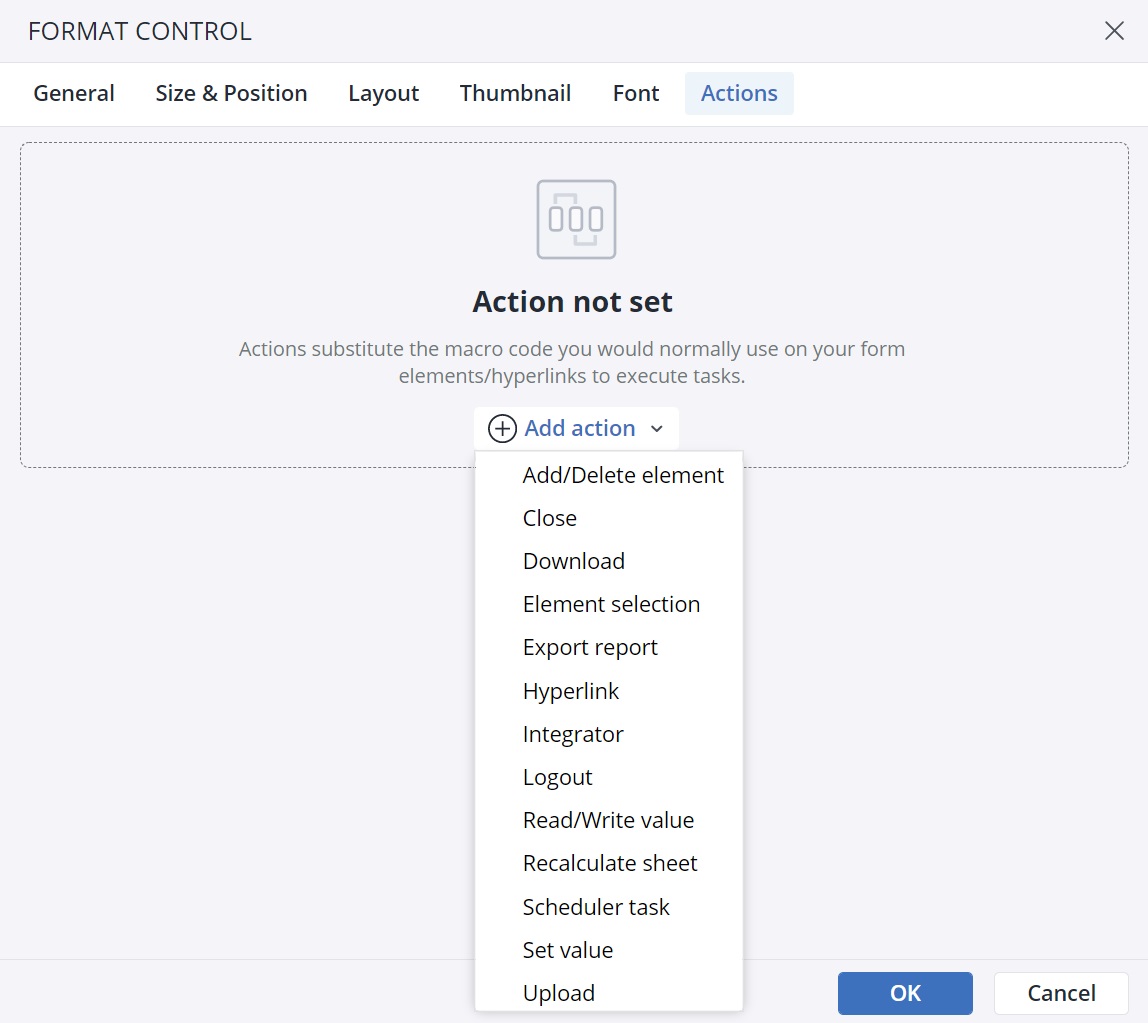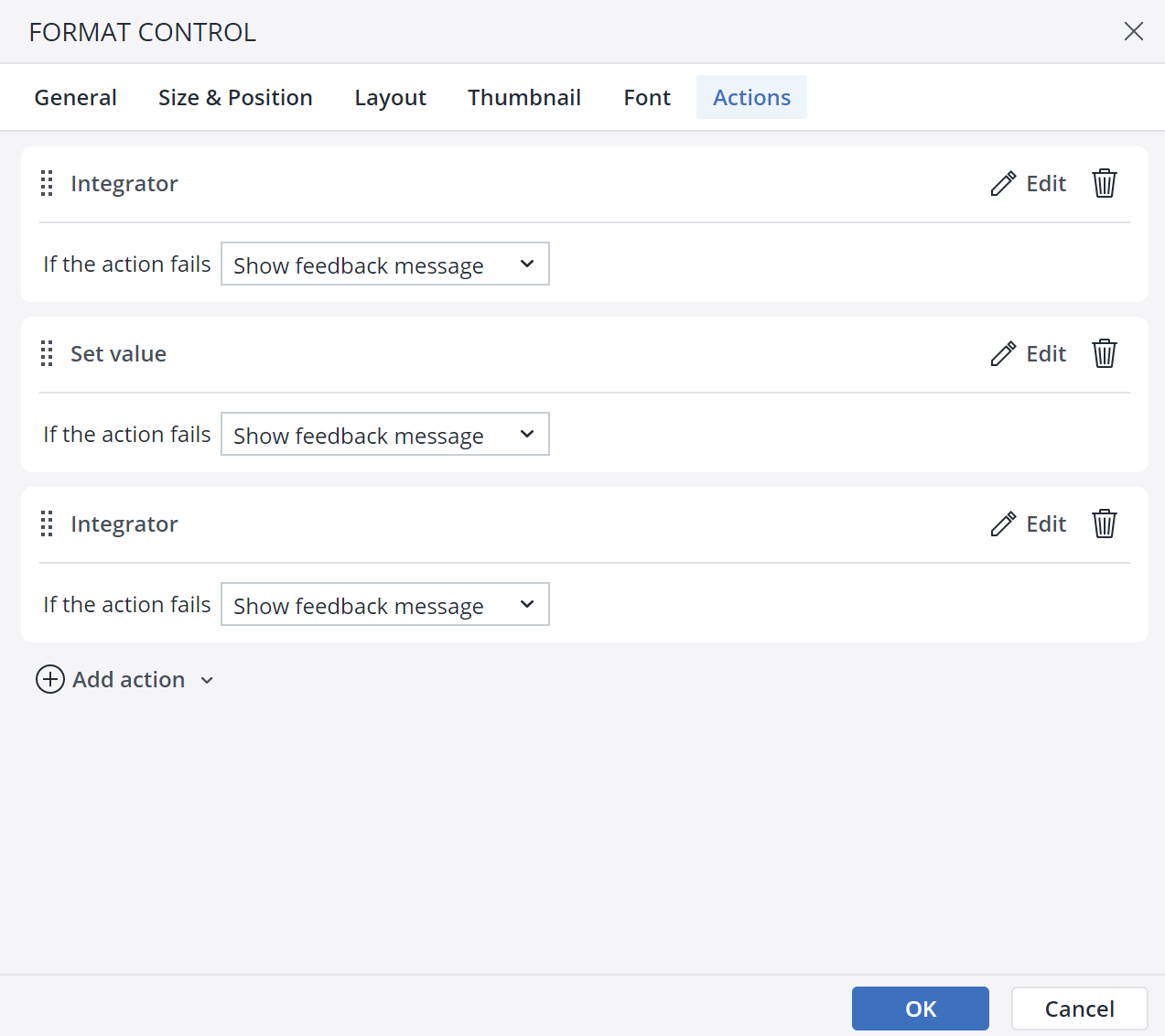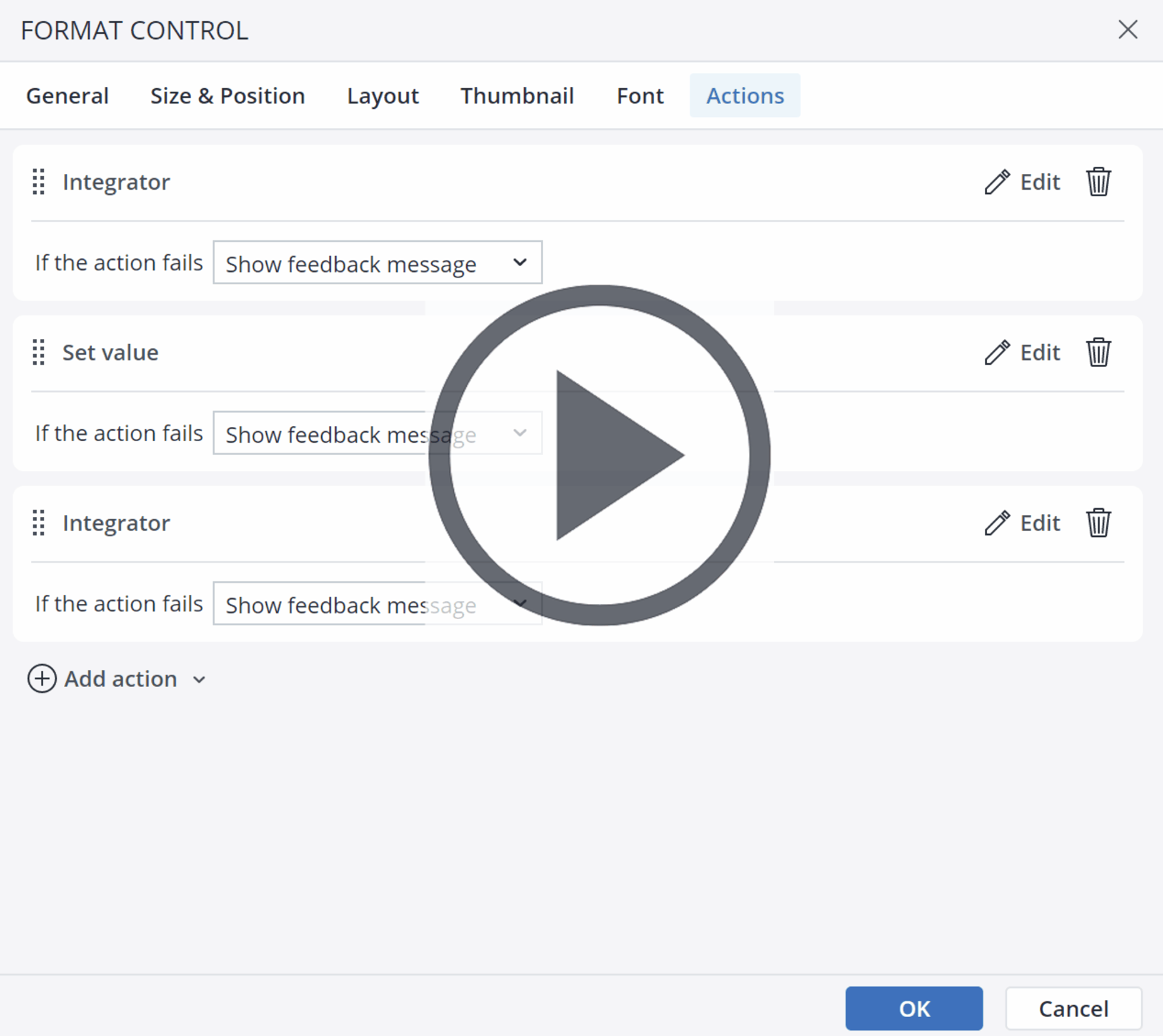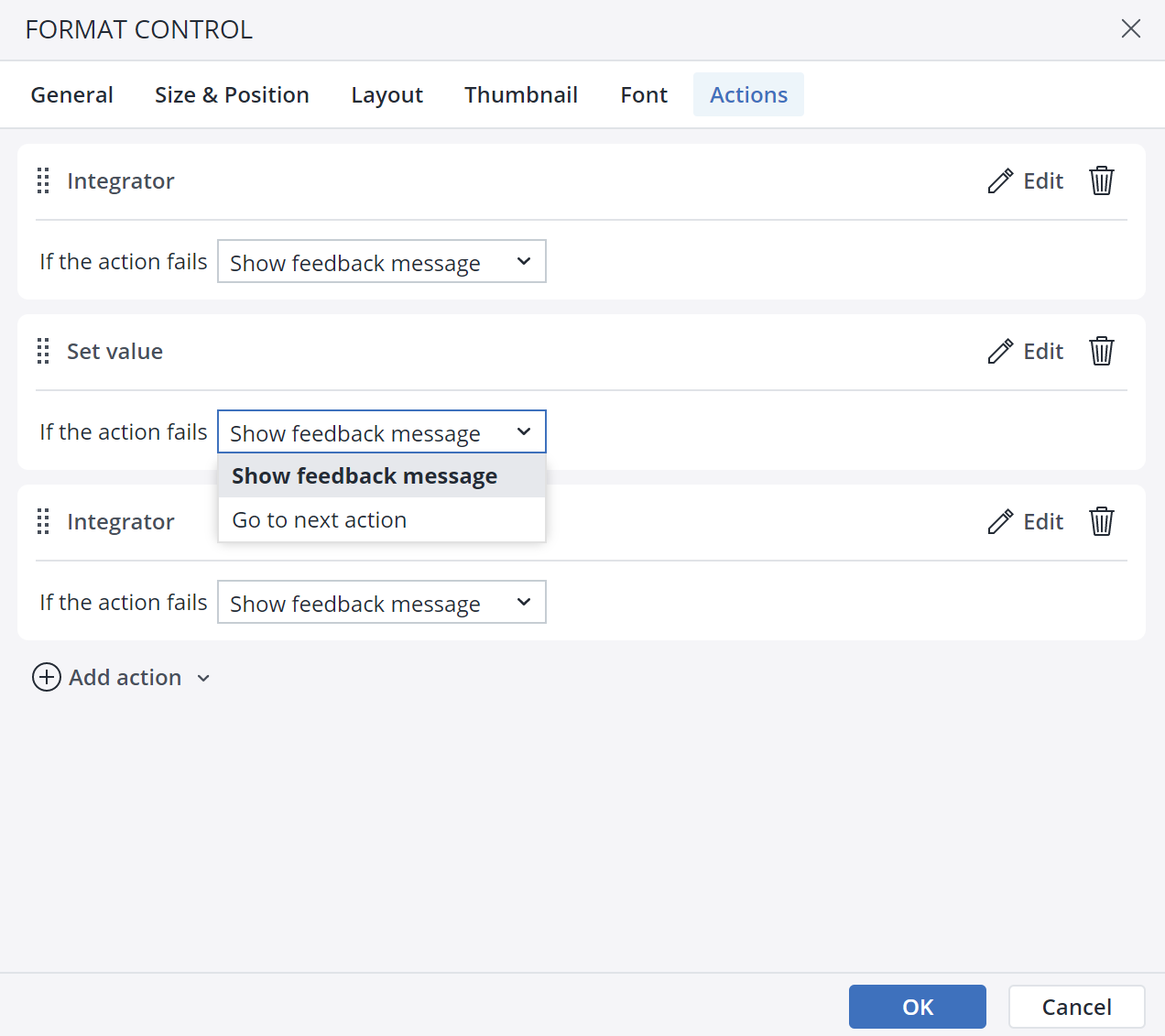Jedox Web offers a wide selection of customizable "Actions," which can be defined for the form elements, such as buttons, checkboxes, date pickers, and combo boxes. Adding an Action to a form element allows the report users to execute a specific operation, by clicking/using the respective form element in the report. In contrast to macros, Actions do not require any coding. Note that combining both an Action and the execution of a macro on form elements is not supported. If an Action is defined on a form element, any macros also assigned with it will not be executed anymore when clicked/used.
The following Actions are available:
- Add/delete element: creates or deletes an element with a click
- Close*: closes the current workbook
- Download: downloads a file
- Element Selection: enables the end users to select elements from a dimension and use that selection as a part of a planning process
- Export Report: enables the end user to export a report
- Hyperlink*: executes a hyperlink
- Integrator: runs an Integrator job; variables of the job can be linked (e.g., to spreadsheet cells or @variables). The behavior of execution is configurable.
- Logout*: logs the user out of Jedox
- Read/write value: reads a value from an OLAP cube cell and sets it to a target (e.g. @variable); can also write a value in an OLAP cube cell.
- Recalculate: recalculates the current sheet (similar to Recalculate ribbon button or F9 key)
- Scheduler Task: allows a designer to execute any type of scheduled job, whether it is active or not
- Set value: sets a value in a named range, cell, or variable.
- Upload: uploads a file to Jedox Web Designer; file types, maximum size, and target folder can be specified by the designer. Note that access to Jedox Designer is currently required for full functionality.
In some Actions, users can parametrize the settings by pointing them to Spreadsheet cells, Named ranges, or Variables. However, in this context, the Spreadsheet cell references are static, and will not automatically change if they are moved on the sheet (for example, by inserting or deleting columns). They should be manually changed. It is thus recommended to use Named ranges, or Variables where possible.
*In User Preview mode, execution of the Close, Logout, and Hyperlink Actions are disabled.
Enabling Actions
In the properties dialog of each form element, the "Actions" option offers an array of Actions to be performed when a form element is used or clicked on. Most Actions will have configuration options, many of which can be dynamic, e.g. read from a spreadsheet cell.
Optionally, a confirmation prompt can also be defined for the given Action on the form element, with customizable text, icon, etc. If used, the Action is only executed once the end user confirms.
Dynamic inputs
Actions allow great flexibility by providing dynamic inputs for most of the parameters. While not explicitly selectable, even spreadsheet formulas can be entered and evaluated. For achieving this, "Range" has to be selected from the input context menu.
Note: it is recommended to use spreadsheet formulas in actual cells and then refer to them as Named ranges. This allows easier traceability and reuse of these values. Plus, there is no error checking for formula syntax within an Action.
Multiple Action execution
As a Report Designer, you can define up to four Actions to be executed in a sequence. For example, you can set a sequence of Actions to first execute the Integrator job 1, then set Variable 1, and then execute Integrator job 2.
It is possible to reorganize the order in which the Actions are executed. To change the Actions’ order, simply drag and drop them in your desired position. Note that the Logout Action is a terminal event Action, and no other Action can follow it in a multiple-Actions sequence.
You can set up a confirmation dialog for each Action. Also, you can decide what should happen if one of the Actions in the sequence fails. It is possible to either show a feedback message or go to the next Action.
Updated July 21, 2025




